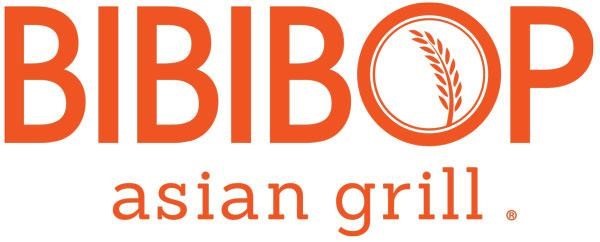
Nutrition facts and Weight Watchers points for Steak from Bibibop.
Calories
There are 170 calories in Steak.
Nutrition Facts
| Serving Size | ? | |
| Calories | 170 | |
| Calories From Fat | 63 | |
| Amount Per Serving | % Daily Value* | |
| Total Fat | 9g | 14% |
| Saturated Fat | 2.5g | 13% |
| Trans Fat | 0g | |
| Cholesterol | 45mg | 15% |
| Sodium | 440mg | 18% |
| Total Carbohydrates | 9g | 3% |
| Dietary Fiber | 0g | 0% |
| Sugars | 6g | |
| Protein | 17g | 34% |
| Vitamin A | ? | |
| Vitamin C | ? | |
| Calcium | ? | |
| Iron | ? | |
*All percent daily value figures are based on a 2,000 calorie diet.
Nutritional information source: Bibibop
Allergens
We are working on getting the allergen information for this item.
Ingredients
We are working on getting the ingredients for this item.
Additional Information
Bibibop is a popular restaurant known for its delicious and customizable Korean-inspired bowls. One of the main ingredients that Bibibop offers is steak, which adds a savory and protein-rich element to their menu. In this article, we will explore the features, benefits, and potential drawbacks of Bibibop’s steak option.
Features & Benefits
Bibibop’s Steak is a flavorful and tender cut of meat that is seared and seasoned to perfection. It is typically made from flank steak, known for its rich, beefy flavor. The steak is thinly sliced, which allows for quick and even cooking. This ensures that every bite of Bibibop’s steak is satisfying and full of flavor.
Advantages:
- High in protein: Bibibop’s Steak is a great source of protein with approximately 17 grams per serving. Protein is essential for several bodily functions, including muscle repair and growth, immune system support, and hormone production.
- Nutrient Rich: Steak contains essential nutrients such as iron, zinc, and vitamin B12. Iron is important for oxygen transport and energy production, while zinc supports immune function and cell growth. Vitamin B12 is essential for nerve function and red blood cell production.
- Satisfying and tasty: The steak adds a rich and meaty flavor to the Bibibop bowl. It enhances the overall flavor profile and provides a satisfying eating experience. The combination of tender steak, vegetables, rice and other toppings creates a well-rounded and delicious meal.
Disadvantages:
- High in Fat: While steak provides flavor and richness, it is also relatively high in fat. Bibibop’s steak contains 9 grams of total fat per serving, including 2.5 grams of saturated fat. While moderate fat intake is part of a balanced diet, people who are watching their fat intake or following certain dietary restrictions may need to consider this aspect.
- Sodium content: Bibibop’s Steak contains 440 milligrams of sodium per serving. Excessive sodium intake can contribute to high blood pressure and other health problems, especially for people with certain medical conditions. It’s important to watch your sodium intake and balance it with other low-sodium foods throughout the day.
Conclusion
Bibibop’s Steak is a flavorful and protein-packed option for those looking to enjoy a Korean-inspired meal. It offers the benefits of high-quality protein, essential nutrients, and a satisfying eating experience. However, it’s important to be aware of its moderate fat and sodium content. As with any food choice, moderation and balance are key to maintaining a healthy and balanced diet.
Please note that the information in this article is based on information available at the time of writing and is subject to change. It is always recommended that you check with the restaurant or refer to updated nutritional information for the most accurate and up-to-date information.
Questions and Answers
Is Bibibop’s Steak a good source of protein?
Yes, Bibibop’s Steak is a great source of protein, providing approximately 17 grams per serving. Protein is essential for several bodily functions and can support muscle repair, immune function, and overall health.
What nutrients does Bibibop’s Steak provide?
Bibibop’s Steak contains essential nutrients such as iron, zinc and vitamin B12. Iron is important for oxygen transport and energy production, while zinc supports immune function and cell growth. Vitamin B12 is essential for nerve function and red blood cell production.
Can I enjoy Bibibop’s Steak if I’m watching my fat intake?
While Bibibop’s Steak provides flavor and richness, it is relatively high in fat. It contains 9 grams of total fat, with 2.5 grams of saturated fat per serving. If you’re watching your fat intake, you may need to consider this aspect and balance it with other low-fat food choices.
Is Bibibop’s Steak suitable for people with high blood pressure?
Bibibop’s Steak contains 440 milligrams of sodium per serving, which may be a concern for individuals with high blood pressure or certain medical conditions. It’s important to be aware of sodium intake and consider other low-sodium food options if you have specific dietary restrictions.
Can Bibibop’s Steak be part of a balanced diet?
Yes, Bibibop’s Steak can be part of a balanced diet when consumed in moderation and as part of a well-rounded meal. It provides protein, essential nutrients and a satisfying eating experience. However, it’s important to consider your individual dietary needs and make choices that are consistent with your health goals.